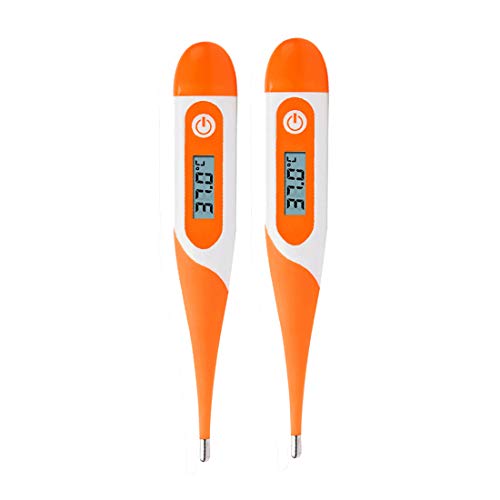Posted on the Internet yesterday is a study dated 11 April 2020 that finally addresses a type of investigation avoided by the energetic creators of hype and fear on television and elsewhere about an illness resulting from a virus called SARS-CoV-2. Using a sample from Santa Clara County, California, home of Stanford University, the study tested the blood of 3,330 people, using a new testing technique to look for antibodies that are expected to exist if the virus has been inside a person, whether they had any symptoms or not.
In this case, by using the math of statistics, the attempt is made to extend the observed results to the population of a specific area, to try to figure out how many people in the area had the virus in them at some point, even if they have shown no symptoms. Then — using the population of the area, the statistical number of persons who had been exposed, the number who are thought to have the virus by other testing and clinical observation, and the number whose death was caused by the virus (a difficult determination) — better opinions can be developed. This use of statistical sampling can try to describe reality in a more correct way than the so-called “mathematical models” promoted in the media that whipped up hysteria about the virus, and those models could politely be called wild speculation. The models were used to justify draconian and illegal orders by governors and mayors that destroyed incomes, closed businesses, and did not accurately and constructively address the problems that may be caused by the virus.
 Performacide ~ Disinfe...
Buy New $34.99
(as of 03:14 UTC - Details)
When you have an idea about how many people have developed antibodies and are still alive, whether having had symptoms or not, you can begin to see the status and effect of the virus. Furthermore, people who have naturally developed antibodies have usually become immune. You can also calculate the fatality rate of the virus in a better way.
Performacide ~ Disinfe...
Buy New $34.99
(as of 03:14 UTC - Details)
When you have an idea about how many people have developed antibodies and are still alive, whether having had symptoms or not, you can begin to see the status and effect of the virus. Furthermore, people who have naturally developed antibodies have usually become immune. You can also calculate the fatality rate of the virus in a better way.
One of the authors of the study is John P.A. Ioannidis, who is a professor at the Stanford University Medical School [1]. He kicked up some controversy in an article in March when the hype about the virus was escalating by saying, “The data collected so far on how many people are infected and how the epidemic is evolving are utterly unreliable” [2].
Santa Clara County, California, is said to have a population of about 1,943,411. The study estimated that between 48,000 and 81,000 people had been infected there. And, “The reported number of confirmed positive cases in the county on April 1 was 956, 50-85-fold lower than the number of infections predicted by this study”. Using the results from the sample, an estimate was made about a fatality rate (page 7)–
“If our estimates of 48,000-81,000 infections represent the cumulative total on April 1, and we project deaths to April 22 (a 3 week lag from time of infection to death [reference note 22]), we estimate about 100 deaths in the county. A hundred deaths out of 48,000-81,000 infections corresponds to an infection fatality rate of 0.12-0.2%. If antibodies take longer than 3 days to appear, if the average duration from case identification to death is less than 3 weeks, or if the epidemic wave has peaked and growth in deaths is less than 6% daily, then the infection fatality rate would be lower. These straightforward estimations of infection fatality rate fail to account for age structure and changing treatment approaches to COVID-19. Nevertheless, our prevalence estimates can be used to update existing fatality rates given the large upwards revision of under-ascertainment”.
Dr. Ioannidis has said that the death/fatality rate for seasonal influenza is about 0.10 percent. Thus, if this study presents the situation realistically, the fatality rate for COVID-19 is similar to a flu season, at least in that part of California.
 Shindn UV Indoor Disin...
Buy New $66.00 ($66.00 / Count)
(as of 04:25 UTC - Details)
Shindn UV Indoor Disin...
Buy New $66.00 ($66.00 / Count)
(as of 04:25 UTC - Details)
The text of the study is eight pages long, before the references and graphics. It has detail like a study of its type should. As in all statistical studies, there are side issues, such as how complete and representative the sample of persons is, how valid the testing method and statistics used are, etc. In this one a new testing technique was used that has not yet been approved by the Food and Drug Administration (FDA), but the article describes how the test kit was tested for the study. Even though it contains some statistical terminology, the study is worth reading–here and here.
A respected scientist in Germany became so frustrated with the lack of scientific discussion about the virus and the restrictions imposed in the country, that he wrote an open letter to the Chancellor of Germany and discussed it in a video on 29 March. Dr. Sucharit Bhakdi states that he is a microbiologist and infectious disease epidemiologist who for 22 years was chairman of the Institute of Medical Microbiology and Hygiene at Mainz University, where he researched the pathogenesis, diagnosis, and therapy of infectious diseases. He presents five questions. Dr. Bhakti speaks in German, but if you click on the “cc” button at the bottom of the video display area, it will show some subtitles in English.
In his video, Dr. Bhakdi says that two years ago there were 20,000 flu deaths in Germany (a very large number for that country), and no stringent preventive measures were implemented at all. Germany’s population is around 80 million. The U.S. population is estimated to be around 330 million.
Around the second week of March, the situation here about the virus changed into one of bureaucratic, media, political, and financial interests. The presentation in mass media has shifted into a version of agitating propaganda (agitprop). Politicians and bureaucracies do not want to admit they made a mistake or did something wrong. Because mayors and governors jumped to conclusions and issued unnecessary and destructive orders, they are now stuck, and do not want to cancel their decisions that destroyed incomes and harmed the well-being of people. I tried to figure out unemployment insurance claim numbers, but charts by the federal Department of Labor are unclear and numbers in similar categories do not match. And of course unemployment insurance claims are less than the number of people who have lost income, business, and work.
—
[1] https://profiles.stanford.edu/john-ioannidis
[2] Article on the statnews.com website by John Ioannidis, 17 March 2020.
Reprinted with the author’s permission.
 2pcs Digital Oral Ther...
Buy New $19.00 ($9.50 / Count)
(as of 03:14 UTC - Details)
2pcs Digital Oral Ther...
Buy New $19.00 ($9.50 / Count)
(as of 03:14 UTC - Details)
 Gloves Latex Free, Glo...
Buy New $14.89 ($14.89 / Count)
(as of 11:56 UTC - Details)
Gloves Latex Free, Glo...
Buy New $14.89 ($14.89 / Count)
(as of 11:56 UTC - Details)
 3M Cavilon Liquid Anti...
Buy New $9.45 ($9.45 / Count)
(as of 02:28 UTC - Details)
3M Cavilon Liquid Anti...
Buy New $9.45 ($9.45 / Count)
(as of 02:28 UTC - Details)
 C-Clear Hygienic Clean...
Buy New $16.28 ($0.16 / Wipes)
(as of 02:28 UTC - Details)
C-Clear Hygienic Clean...
Buy New $16.28 ($0.16 / Wipes)
(as of 02:28 UTC - Details)





